Services
- Home
- Services
Our
Calibration
Services
Your one-stop-shop for everything related to Advanced Driver Assistance Systems
ADAS Calibration,
Programming, Diagnostics,
& More
We offer more efficient and affordable ADAS calibration services due to our dedicated facility and our sole purpose of vehicle safety system diagnosis, repair, and calibration.
- FORWARD COLLISION WARNING
- AUTOMATIC EMERGENCY BRAKING
- ADAPTIVE CRUISE CONTROL
- LANE DEPARTURE WARNING
- LANE KEEPING ASSIST
- BLIND SPOT MONITORING
- REAR CROSS TRAFFIC ALERT
- PARKING ASSIST OR SELF-PARKING
- ADAPTIVE HEADLIGHTS
- AUTOMATIC HIGH-BEAM & DIMMING
FORWARD COLLISION WARNING
WHAT IT DOES
Forward collision warning scans the road ahead while you drive. It’s designed to warn you if you’re about to crash into a slower moving or stopped car. The Intelligent Forward Collision Warning system uses a radar sensor located in the front of the vehicle to detect the distances between the two cars ahead, as well as their relative speed.
1. Scan
Scan the road ahead and maintain a safe following distance.
2. Be Alert
Warning tones or visual alerts will warn you that a collision is about to occur.
3. Prepare to Brake
Brake or steer to safety to avoid a crash.
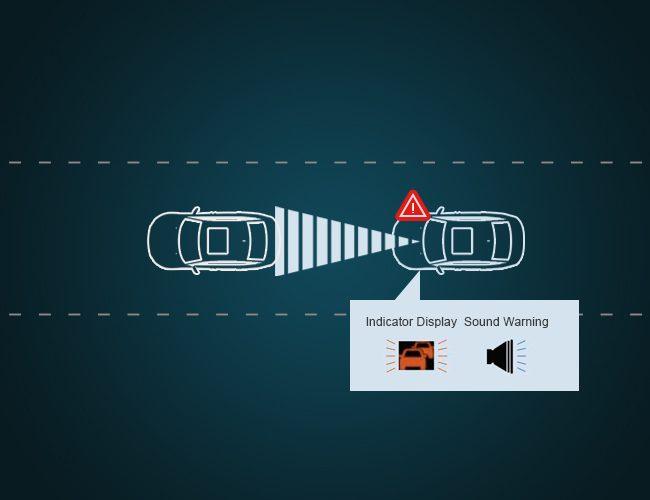
AUTOMATIC EMERGENCY BRAKING
You must have heard about a new braking technology in vehicles known as Automatic Emergency Braking (AEB). The automatic emergency braking protects against rear-end collisions.
As the name suggests, AEB is a car safety feature that helps during emergency braking. This system alerts the driver if an accident is about to occur and allows the driver to apply brakes to the maximum capacity. The system steps in if there is no response from the driver or the response is inadequate and applies the brake to prevent the accident or at least reduce its severity and impact. So this system proves to be a lifesaver in case an accident is about to occur.
AEB mainly falls into three categories:
Low-speed system
Pedestrian system
High-Speed System
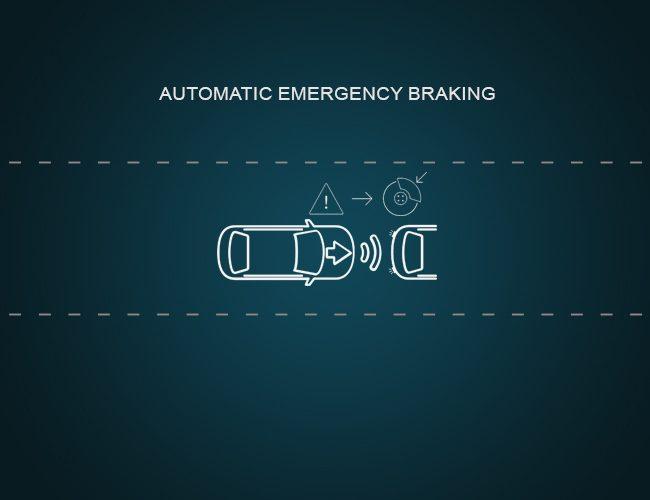
ADAPTIVE CRUISE CONTROL
Adaptive cruise control (ACC) is an enhancement of conventional cruise control. ACC automatically adjusts the speed of your car to match the speed of the car in front of you. If the car ahead slows down, ACC can automatically match it. Once the car ahead moves out of your lane or accelerates beyond your car’s set speed, your ACC allows your car to return to the speed that you have set. Other than setting your speed, you only need to turn on the system and select your preferred following distance.
The specific controls will be different depending on your particular car type, but usually you will have to start by setting a cruising speed and a following distance to the car ahead.
Activation/Deactivation
Setting the speed
Setting the distance
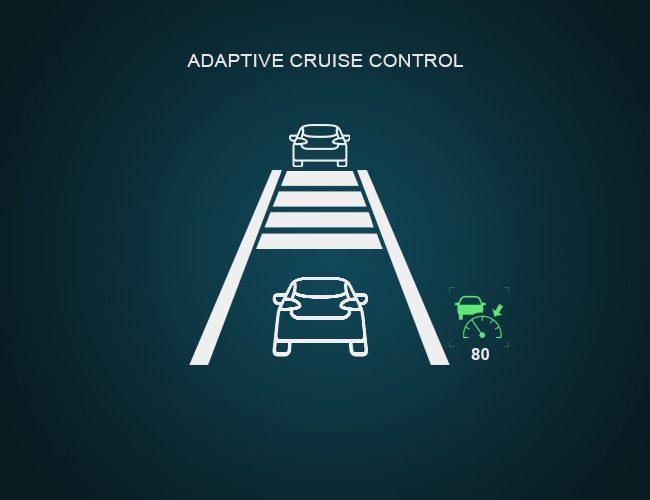
LANE DEPARTURE WARNING
Lane Departure Warning is an advanced driver assistance system (ADAS) found in many newer vehicles. It warns drivers when they are leaving their lane unexpectedly. Lane departure warning systems are a group of safety technologies that are primarily designed to prevent high-speed accidents on highways and freeways.
This system has three primary types.
Lane Departure Warning (LDW)
Lane Keeping Assist (LKA)
Lane Centring Assist (LCA)
SYSTEM BENEFITS FOR DRIVERS
Helps to avoid accidents which are caused by unintentional straying from the marked lane
Allows to early correct driving mistakes
Supports to stay in the lane when being inattentive
The specific controls will be different depending on your particular car type, but usually you will have to start by setting a cruising speed and a following distance to the car ahead.
Activation/Deactivation
Setting the speed
Setting the distance
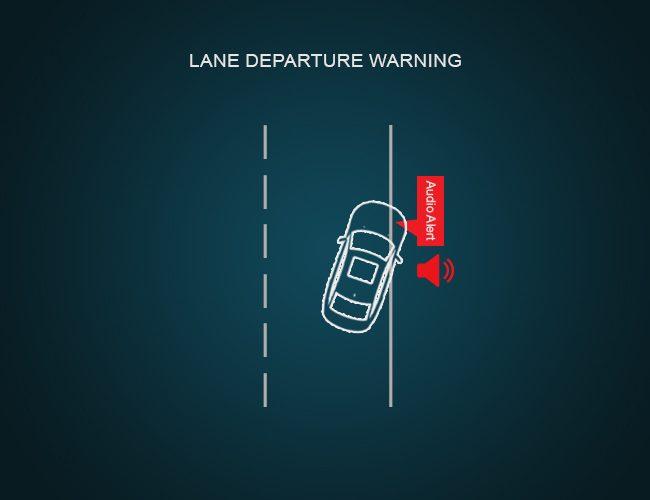
LANE KEEPING ASSIST
Lane Keeping Assistance (LKA) systems monitor the position of the vehicle with respect to the lane boundary and apply torque to the steering wheel, or pressure to the brakes, when a lane departure is about to occur.
LKA is built on and generally combined with a lane departure warning system that can alert you in various ways (sounds, lights or vibrations of the steering wheel or seat) that you are drifting out of your lane.
LKA is part of the ‘second wave’ of active safety measures – using cutting-edge technology such as on-board sensors, radar, cameras, GPS and lasers – that is being fitted to passenger cars.
Active safety technology can prevent accidents from happening altogether or at least actively help the driver to reduce the impact of an emergency situation.
Active systems give the driver more control in dangerous situations. To that end, various safety systems constantly monitor the performance and surroundings of a vehicle.
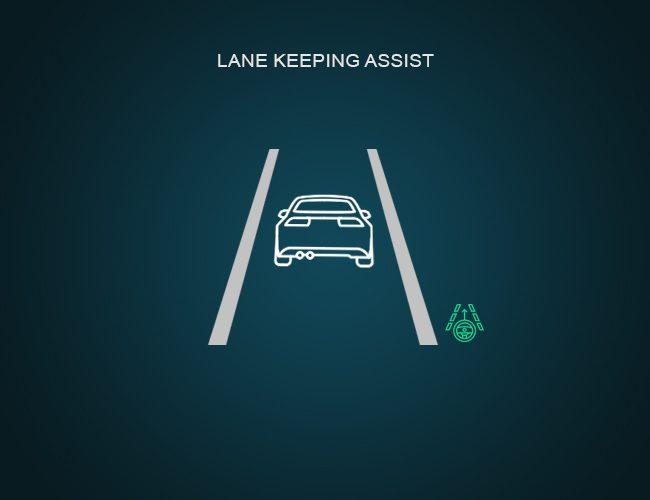
BLIND SPOT MONITORING
All vehicles have blind spots. These are areas or zones on either side of a car that a driver cannot see when looking into the rear view or side-view mirrors. Blind spots are why a driver should always turn their head and check for cars before changing lanes.
Typical scenarios in which BSM issues a warning include:
When a passing car in an adjacent lane approaches
When a vehicle changes lanes and enters the warning zone from the side
BSM systems will not issue a warning in certain situations:
When a vehicle approaches from the opposite direction
When a car approaches from directly behind in the same lane
When passing stationary objects such as stopped vehicles, guard rails, roadway barriers, and light poles
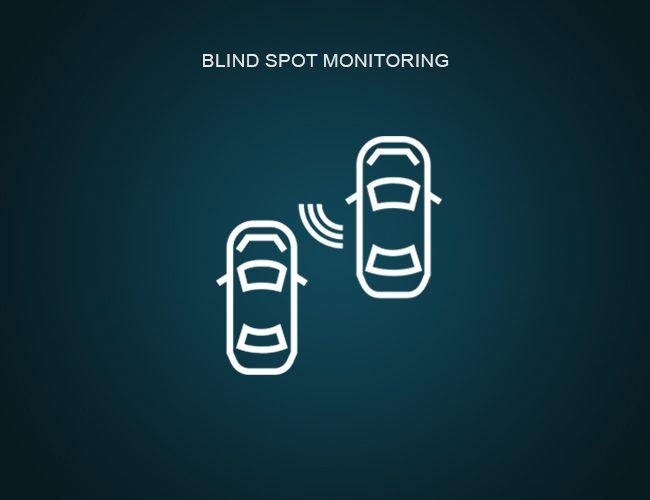
REAR CROSS TRAFFIC ALERT
Rear Cross-Traffic Collision Warning is a driving assistance system that informs the driver if another vehicle is approaching from either direction when the vehicle is in reverse and is backing out of a parking space.
Rear Cross Traffic Alert is designed to help you back out of spaces where you may not see approaching traffic, as sometimes happens in parking lots. Rear cross traffic alert monitors two areas behind you for vehicles approaching from the right or left.
HOW TO USE IT?
When backing out of a space, reverse slowly. The rear cross traffic alert system will alert you when other vehicles are detected near or in your backing path. Once the rear end of your vehicle is beyond adjacent objects and vehicles, the rear cross traffic alert system will then have a clear view of traffic approaching from the left or right.
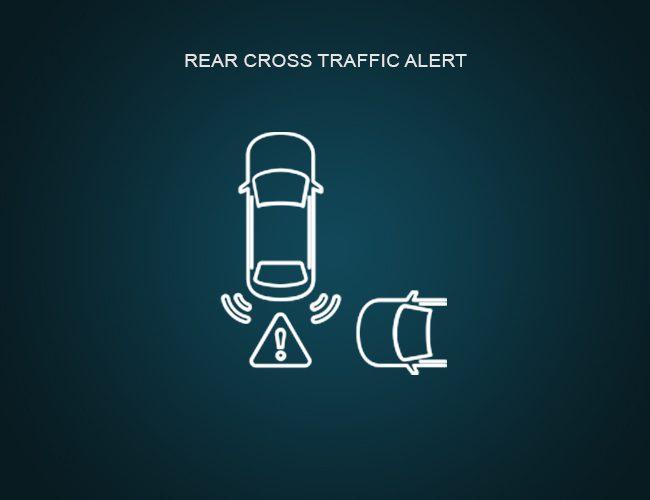
PARKING ASSIST OR SELF-PARKING
Park Assist is an automated parking aid that helps drivers park with greater precision, using guidance system technology that rivals ultrasonic and other camera-based solutions with superior, advanced technology.
How does it work?
Self-parking technology give vehicles the ability to park with minimal or no input from the driver. This allows vehicles to park in tight or small parking areas more easily. The wheels are able to turn by themselves and execute complicated parking tasks, such as parallel parking, or parking in tight spaces.
By using sensors and cameras, self-parking technology is able to manoeuvre the vehicle into parking spots. All that is typically required by the driver is moving the transmission into reverse, and easing off or on the brake.
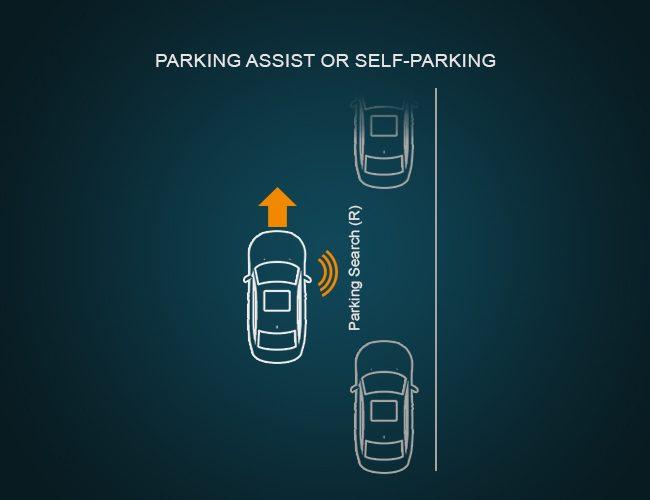
ADAPTIVE HEADLIGHTS
A new and impressive technology that is proving itself by drastically minimizing road accidents is adaptive headlights. This is a type of car headlights that will turn on when the steering wheel is turned. So, how is this helping to avoid accidents? Consider when you turn down a dark road, and a deer jumps out onto the road, or another vehicle is in your path. Using adaptive headlights will allow you to be able to see anything on the road, at all times.
THE TECHNOLOGY BEHIND IT
Unlike traditional headlights, which are in a fixed position and only capable of illuminating directly in front of you, adaptive headlights are not in a fixed position at all times. These headlights use electronic sensors that can detect your steering angle to swivel based on the direction your car is heading.

